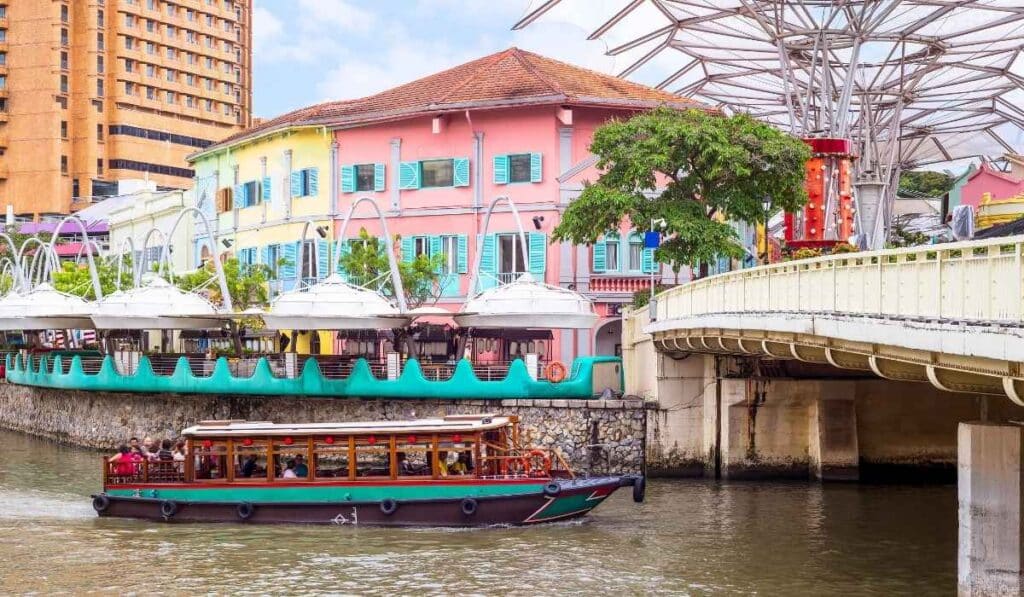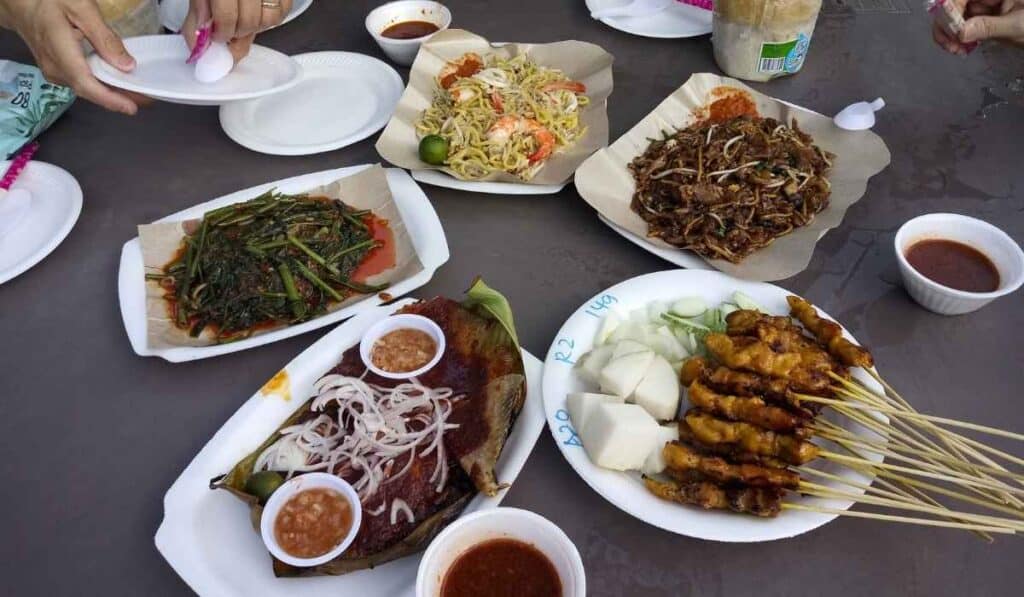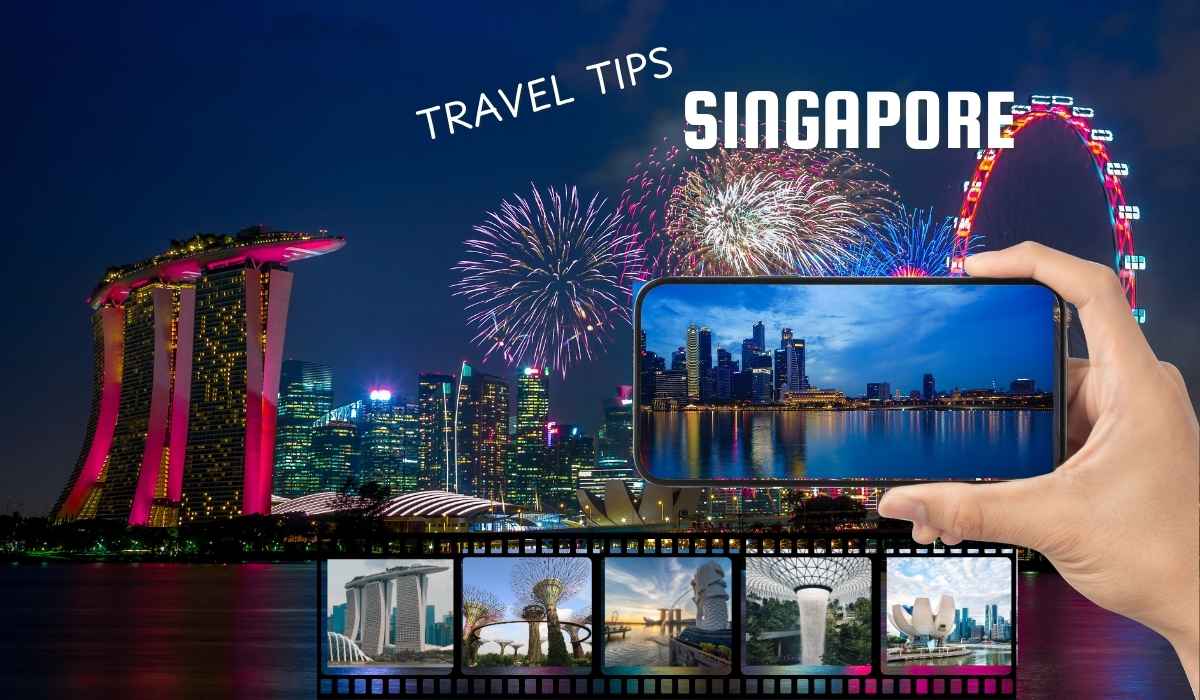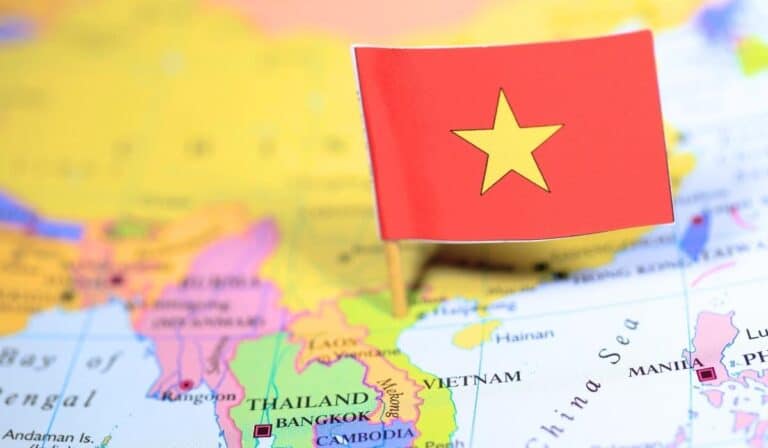Singapore – the 5th most visited country in the world and the 2nd most popular tourist destination in Asia-Pacific, the Little Red Dot offers iconic skyscrapers and efficient infrastructure with a wonderful cultural diversity to soak in. From almost sanitized streets, to a culture where everyone follows rules and laws without flinching, it is essential to load yourself with some travel tips to Singapore. Known for its futuristic skyline, spotless streets, and mouthwatering street food, Singapore offers a one-of-a-kind travel experience. But before you book your flight, there are a few things you should know to avoid fines, culture shocks, or missing out on the best experiences. This guide covers the top things to know when traveling to Singapore for a smooth, enjoyable, and respectful visit.
So, before you zoom into the City of Lions on a hyper clean Metro Rail Transit, here is the quintessential Singapore travel guide, blending essential laws, travel hacks, transit tricks, and cultural cheat codes.
Things To Know Before Traveling To Singapore
For tourists visiting Singapore for the first time, this list of things to know before traveling to Singapore and whilst you are there will come in handy as you explore the impressive and immersive experiences, including – but not limited to – skyscrapers meeting street hawkers and robots delivering your kopi. If you’re dreaming of exploring lush gardens suspended in mid-air or riding a cable car to a beach built from imported sand without flouting any rules, you’re in the right place!
1. Entry Essentials
Before you hop into this dazzling city-state, don’t forget to keep your entry documents in line. Unlike many destinations, Singapore doesn’t stamp your passport; you’ll get an e-Visit Pass via email. And it takes its border processes very seriously.
Here’s your must-have list:
- Passport: Must be valid for at least 6 months beyond your date of arrival.
- Visa or e-Visa: Nationals from countries like India, China, Russia need this. Most Europeans, Americans, Australians, and ASEAN nationals can enter visa-free.
- SG Arrival Card: This is a mandatory declaration form. You have to submit it within 3 days before arrival. Use the ICA portal or MyICA mobile app. Avoid third-party websites that charge fees. Only use https://eservices.ica.gov.sg/sgarrivalcard.
- e-Visit Pass (e-Pass): Instead of a passport stamp, Singapore sends you this electronically after clearing immigration. Keep it in your inbox!
Singapore Travel Hack: Check if you are eligible for Singapore’s Automated Clearance Initiative (ACI). It will make your life very easy because you can breeze through automated lanes using biometrics on return visits—no registration required.
IG Tip: If you happen to travel with us, all these formalities are sorted for you from our end.
2. Best Time to Visit Singapore
Singapore is one of the most amazing tourist destinations and tourists throng the city all through the year. Boasting of a tropical rainforest climate, meaning it’s hot and humid year-round with no distinct seasons like summer or winter, The weather is constant throughout the year; it’s hot, humid and sweaty. Think 30°C/86°F on good days in Singapore! Still, there are peak times worth considering when the crowds are more and there are many events happening. Singapore does come live during festivals
- December to February: Best time for exploring Singapore because of Chinese New Year celebrations, and slightly cooler breezes. But hotel prices peak at this time!
- June to August: Dry season, mega sales, and summer tourists. This is the time when Universal studios queues give competition to airport lines!
- March to May / September to November: Shoulder months. Fewer crowds, better hotel deals, occasional thunderstorms.
Fun fact: Singapore welcomed 16.5 million visitors in 2024, bouncing back strong from pre-pandemic figures.
3. Laws to know before visiting Singapore
Singapore is called a “fine city” for a reason. People follow the rules to the T and are one of the most law-abiding citizens Its reputation for law and order isn’t exaggerated, especially when it comes to rules for visitors:
- Chewing gum: Only therapeutic gum is allowed, with a prescription.
- Littering: Fines from S$300 to S$1,000.
- Spitting: Illegal and fined.
- Smoking: Only in designated smoking zones.
- Jaywalking: Strictly prohibited.
- Drugs: Possession or trafficking carries the death penalty.
- False declarations on the Singapore Arrival Card can lead to arrest under the Infectious Diseases Act.
It’s all outlined in Singapore’s Environmental Public Health Act, Smoking (Prohibition in Certain Places) Act, and Misuse of Drugs Act.
Things To Know When You Are In Singapore
Once you know the rules, regulations and understand the implications, you can look forward to having a great time in the Lion City. Singapore, though compact in terms of area, offers much more than adventurous activities and bustling market. An immersive cultural experience, wide range of man-made and natural attractions and food to die for are some of the things people visit Singapore for. However, the city does have a system that needs to run efficiently to make that all happen. So how to make Singapore a memorable trip for you?
4. What you should do
Following rules here is not just a polite gesture, it’s a necessity! Thanks to the strict laws and social norms, the country is extremely clean and orderly. Here are the key dos and don’ts at Singapore, starting with what you should do:
- Use crosswalks: Even if the street looks empty; jaywalking can result in a fine.
- Keep public spaces clean: Littering can cost you up to S$1,000.
- Tap your MRT card: When boarding and alighting from trains and buses.
- Respect queue culture: Lines are orderly, and cutting is frowned upon.
- Carry your trash: Yes, you carry the empty wrappers, bottles and everything else till you find a bin (at times till your hotel!)
- Drink tap water: You might be surprised, as I was, but you can drink water straight from the taps in Singapore. Singapore tap water is 100% safe to drink — clean, filtered, and regularly tested. Make sure you carry a water bottle and keep refilling it – drinking water is easily accessible, but bottled water does cost high.
- Keep yourself hydrated: It is not uncommon to spot locals sipping on soft drinks, juices, coconut water while walking from one place to another. Because the weather is humid, it makes sense to keep drinking water and other liquids.
5. What you should avoid
These aren’t just suggestions; they’re laws to be well-versed with, because infractions can cost more than your return flight. So, don’t:
- Chew gum: It’s illegal to sell or import (unless it’s medicinal).
- Smoke in public: Except in designated zones. Fines run high (S$200+).
- Eat or drink on buses/trains.
- Bring durians into hotels, public transport: Your nose will understand why.
- Too much PDA.
6. Singapore Tourist Pass & getting around
If you want to hop between sights, the Singapore Tourist Pass is a godsend. It offers unlimited rides on MRT, LRT, and basic bus services for 1, 2, or 3 days. Cost? Between S$12–S$20. Buy it at TransitLink Ticket Offices in major MRT stations.
Alternatively, opt for:
- EZ-Link/Nets FlashPay: Loadable cards great for pay-as-you-go travel.
- Contactless credit cards: Just tap your Visa/Mastercard at fare gates.
Pro tip: Taxis are reliable but pricier. Install ‘Grab’, the local rideshare app.

7. Booking Your Stay & Attractions in the City of Lions
Singapore can get expensive, especially during holidays or big events like F1 Grand Prix. Accommodation ranges from budget hostels to luxury hotels, but prices spike fast.
It’s always better to book ahead – both your place of stay and attractions. That way, you can avoid the snaking lines and sunstroke. You must visit the following places:
- Gardens by the Bay: Book Flower Dome and Cloud Forest combo tickets.
- Marina Bay Sands SkyPark: Reserve for sunset slots.
- Universal Studios: Buy in advance online for discounts and skip-the-line options.
- Sentosa attractions: Cable car, S.E.A. Aquarium, Trick Eye Museum—all bookable as bundles on platforms like Klook or GetYourGuide.
- Stay near an MRT station: it’ll save you time and transport costs.
Pro tip: Some attractions offer free or discounted entry after 6 PM!
8. What to do in Singapore without spending money
You don’t need a fat wallet to enjoy this polished city. Here’s what you can without spending too much money:
- Marvel at the nightly Supertree Grove light and sound show at Gardens by the Bay.
- Stroll the Southern Ridges and cross Henderson Waves, Singapore’s highest pedestrian bridge.
- Visit the UNESCO-listed Botanic Gardens, a green paradise.
- Walk through heritage districts like Little India, Chinatown, and Kampong Glam.
- Catch live performances at Esplanade Outdoor Theatre, often free!
Planning Your Days In Singapore
The number of days you need in Singapore depends on your travel style, interests, and pace. Here’s a breakdown to help you decide:
9. How many days in Singapore are enough?
Here are possible itineraries for you, all depending on how many days you’re planning to stay there:
- 2–3 Days: Perfect for first-time visitors who want to see the top attractions without diving too deep.
- Must-Do Highlights:
- Marina Bay Sands & SkyPark
- Gardens by the Bay (Flower Dome, Cloud Forest, Supertree Show)
- Merlion Park
- Chinatown or Little India
- Hawker centre food experience (Maxwell or Lau Pa Sat)
- 4–5 Days: Ideal for travelers who want a well-rounded experience—sightseeing, shopping, culture, and nature at a comfortable yet relaxing pace.
- Additions to Above:
- Sentosa Island (beaches, Universal Studios, SEA Aquarium)
- Singapore Zoo or Night Safari
- Orchard Road shopping
- Kampong Glam and Arab Street
- Clarke Quay nightlife
- 6–7 Days: Recommended for slow travelers or families, with time to explore hidden gems and even take day trips for a relaxed, immersive, and very rewarding Singapore experience/
- Additions to Above: Explore Tiong Bahru, East Coast Park, Jurong Bird Paradise, or take a day trip to Bintan Island or Johor Bahru (Malaysia).
Yes, there are beaches, but they’re mostly man-made and best for chill vibes, not snorkeling.
10. Where to Stay in Singapore (Based on Your Travel Style)
Choosing the right neighborhood can shape your whole experience. Here’s where to base yourself depending on your vibe:
- For First-Timers: Marina Bay or City Hall – Close to top attractions, luxe hotels, and the best views.
- For Culture & Food: Chinatown, Kampong Glam, or Little India – Budget-friendly, full of character, and hawker centres galore.
- For Families: Sentosa or HarbourFront – Easy access to Universal Studios, the aquarium, and beaches.
- For Hipster Vibes: Tiong Bahru or Joo Chiat – Boutique cafes, art deco charm, and fewer tourists.
- For Shoppers: Orchard Road – High-end malls, flagship stores, and air-con therapy.
Food And Drink Related Tips For Singapore
In Singapore, food is not just food, but is integral to the country’s identity, culture and national pride. Singapore’s food reflects its diverse population — mainly Chinese, Malay, Indian, and Peranakan communities — all bringing their own rich culinary traditions. The country has people landing on the island just because Singapore is home to a wide array of delectable, Michelin-rated dishes – it is a key tourism driver. Lets explore the tips to eat and drink when in Singapore:

11. Dine like a local at Hawker Centres
Forget restaurants! Hawker centres are where the magic happens. They serve the most delicious dishes, at unbeatable prices. And how do you the food is going to be great? Simple, the longer the queue, the tastier the food.
Must-try dishes include:
- Hainanese Chicken Rice: The national dish
- Laksa: Spicy noodle soup with coconut milk
- Char Kway Teow: Wok-fried flat noodles
- Satay: Skewered grilled meat with peanut sauce
Top hawker centres to check out:
- Maxwell Food Centre (near Chinatown)
- Lau Pa Sat (CBD, open late)
- Newton Food Centre (featured in Crazy Rich Asians)
UNESCO even recognized Singapore’s hawker culture as an Intangible Cultural Heritage of Humanity in 2020 — highlighting how deeply food is woven into daily life.
12. Budget tips for eating out
While eating like a local can save you money, a few more smart choices can help you dine well, without overspending:
- Tap water is safe to drink: Bring a refillable bottle to avoid buying bottled water.
- Alcohol is heavily taxed: Expect high prices at bars and restaurants.
- Public drinking is banned after 10:30 PM: Avoid fines by finishing your drink before the cutoff time.
13. Where to buy snacks and local treats
Looking for affordable munchies or edible souvenirs? Don’t worry, Singapore is the perfect place for munchies, whether you want something to nibble on or to gift as a souvenir. Try:
- Old Seng Choong, Bengawan Solo, or Bee Cheng Hiang for traditional snacks.
- 7-Eleven and Cheers are great for quick bites and cheap bottled drinks.
- Must-try snacks: Kaya toast, salted egg chips, pandan cake, and bak kwa (BBQ meat jerky).
14. Dietary restrictions? No problem in Singapore
Singapore is extremely diverse, and that includes the menu. Your diet needs could be diverse, depending on your religion, ethics or even health-related reasons. But Singapore makes sure you’re accommodated in the following ways:
- Halal options are widely available, especially in areas like Geylang Serai and Kampong Glam.
- Vegetarian and vegan eateries are growing in number, try Whole Earth or VeganBurg.
- Look for dietary icons at hawker stalls or use apps like HappyCow for guidance.
15. Where to Drink in Singapore Without Breaking the Bank
If you want cocktails with a view and bills that don’t make you cry, don’t worry, we’ve got your back! Here’s how you can still enjoy a night out without torching your travel budget:
- Clarke Quay: Singapore’s riverside nightlife hub. Lively bars, happy hour deals, and people-watching galore.
- Haji Lane: Quirky, artsy, and full of indie bars with personality (and more reasonable prices).
- Chinatown: Head to Smith Street or Ann Siang Hill for speakeasy-style bars and hole-in-the-wall gems.
- Hawker Centres with Beer Stalls: Yes, you can enjoy a cold Tiger beer with your satay at Lau Pa Sat or Newton.
Finally, if you’re still wondering, “What attracts tourists to Singapore?”, the response is quite simple. Visit Singapore because it’s 100% squeaky clean and also a food paradise! You can do much here from sipping $20 cocktails under supertrees to ride cable cars to artificial beaches.
So, come here for the skyline, stay for the satay, and maybe the robot that delivers your kopi. And before you dive in, arm yourself with these essential Singapore tips for tourists—they might just save you from a fine, a sunburn, or missing out on the best laksa of your life.
Whether you’re here for a whirlwind weekend or a week-long deep dive, Singapore makes it easy for you to enjoy, eat and explore without any chaos. With its spotless streets, efficient MRT, rulebook-level order, and incredible mix of cultures, it’s not just a city! It’s a finely tuned experience…Pack light, charge your phone, bring your appetite, and get ready to fall in love with the Lion City. With these things to know when traveling to Singapore, we wish you a great holiday!
Frequently Asked Questions On Visiting Singapore For A Vacation
1. What to know before visiting Singapore?
The city is clean, efficient and culturally diverse offering tons of activities and loads of stunning views. Strictly avoid littering, spitting or jaywalking. Chewing gum is strictly restricted and drug laws are severe.
2. Can girls wear shorts in Singapore?
Yes, absolutely. Singapore is quite modern and open-minded that way. Shorts, dresses, and casual wear are common in this fashion-friendly city.
3. What to not bring into Singapore?
Don’t bring chewing gums, e-cigarettes, firecrackers and pirated media. Otherwise, you’ll be fined. Also, declare cash if it’s above S$20,000.
4. How safe is Singapore for tourists?
Singapore is very safe since the crime rates are low compared to other countries. In 2024, the physical crime rate was 331 per 100,000 population.



